New York Daily News Archive / Getty Images A crowd attempts to impede police arrests outside the Stonewall Inn on Christophe...
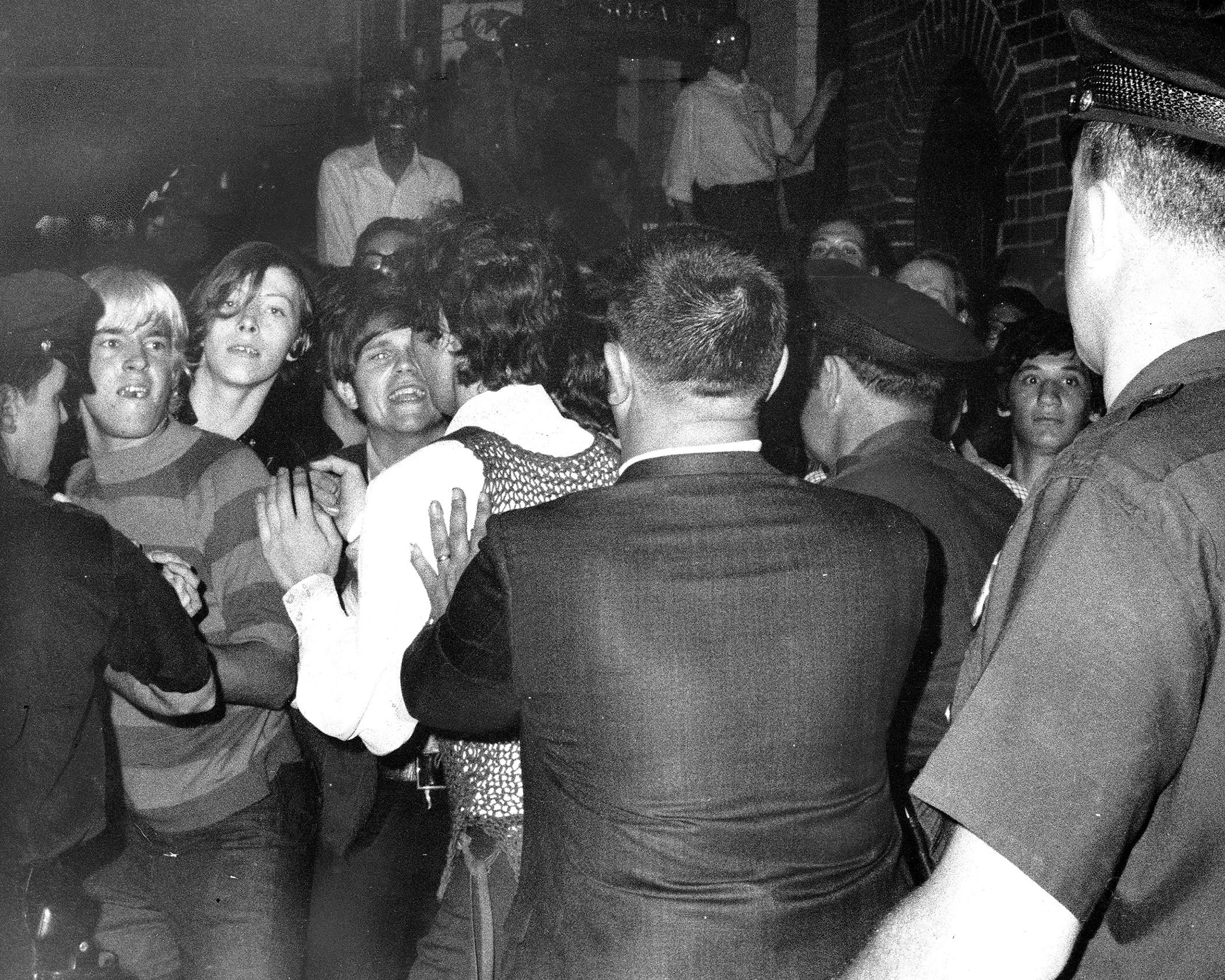
New York Daily News Archive / Getty Images
A crowd attempts to impede police arrests outside the Stonewall Inn on Christopher Street in New York City's Greenwich Village on June 28, 1969.
This Pride Month has been unlike any other in the 51 years since the 1969 Stonewall Riots, an event that sparked an era of LGBTQ activism and set the tone for decades of protest to follow. Pride celebrations in recent years have straddled a line between party and protest, but this year against the backdrop of mass demonstrations against racial injustice and an ongoing global pandemic, Pride celebrations have since returned in force to their roots of political dissent.
In Brooklyn, thousands of demonstrators have taken to the streets to advocate for the equal treatment of Black transgender people, a population that often goes underrepresented in LGBTQ activism and is especially vulnerable to violence. Similar marches have played out in major cities across the US in solidarity with the Black Trans Lives Matter movement.
These marches come amid a landmark decision by the Supreme Court against discrimination in workplaces on the basis of sexual orientation and gender identity. While the court ruling marks an undeniable victory for LGBTQ people in the US, images of protesters in white marching by the thousands are a clear signal of the enormous distance still left to overcome in the fight for justice, equality, and visibility for the LGBTQ community.
BuzzFeed News spoke with the New York Public Library's assistant director of collection development, Jason Baumann, who coordinates the library's LGBTQ initiatives. Here, Baumann discusses the vital role of protests in the advancement of LGBTQ rights, dating back to the Stonewall Riots in 1969, and the lessons to be learned from these pivotal moments in LGBTQ history.
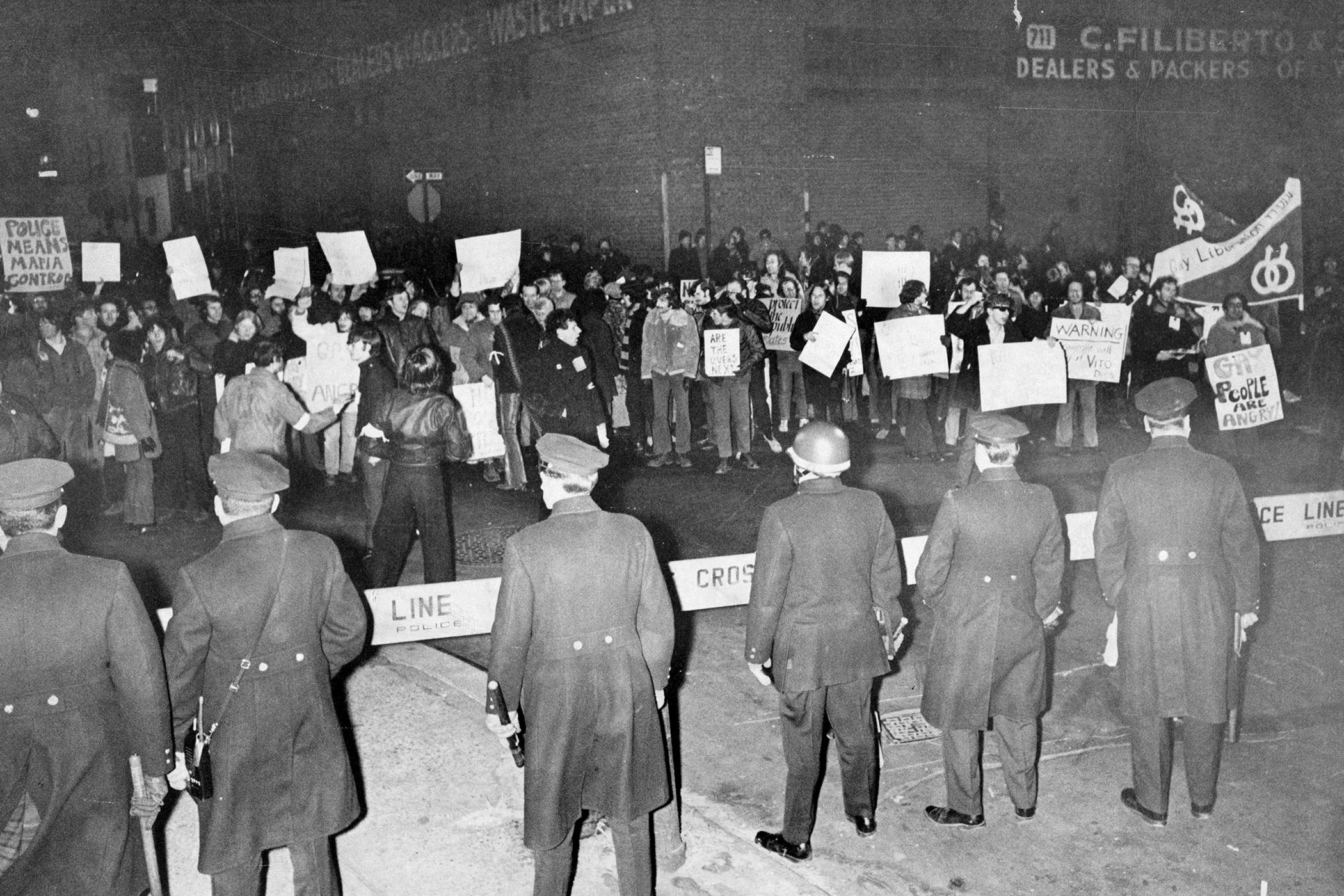
New York Post Archives / Getty Images
Members and supporters of the Gay Liberation Front confront cops in New York City on March 10, 1970.
How have protests been essential to the advancement of LGBTQ civil rights?
For us LGBT people, the act of protest has always been about us taking public space. It’s been a way for us to both signal to authorities that we have political power and agency, but also for gay, lesbian, and transgender people to see that they are a community.
How have these protests changed over the years?
Really, LGBT protests in public really started in the mid-1960s, but they were small affairs. One of the first ones in New York was at the Selective Service Agency, and maybe there were about 10 people there who were willing to be out as homosexuals. It’s important to realize that being gay or lesbian was a crime in the United States up to 2003, and it was also thought of as a mental illness that [people] could be institutionalized and subjected to electroshock treatment for. So for these people to publicly make a statement that they were gay or lesbian was this enormous risk for them — they could have lost everything.
Part of the statement that was being made in these early marches was the refusal to be an invisible minority. For other minority groups in the US, there wasn’t an issue of “coming out” to have to show our numbers, so this was a very dramatic thing in LGBT politics.
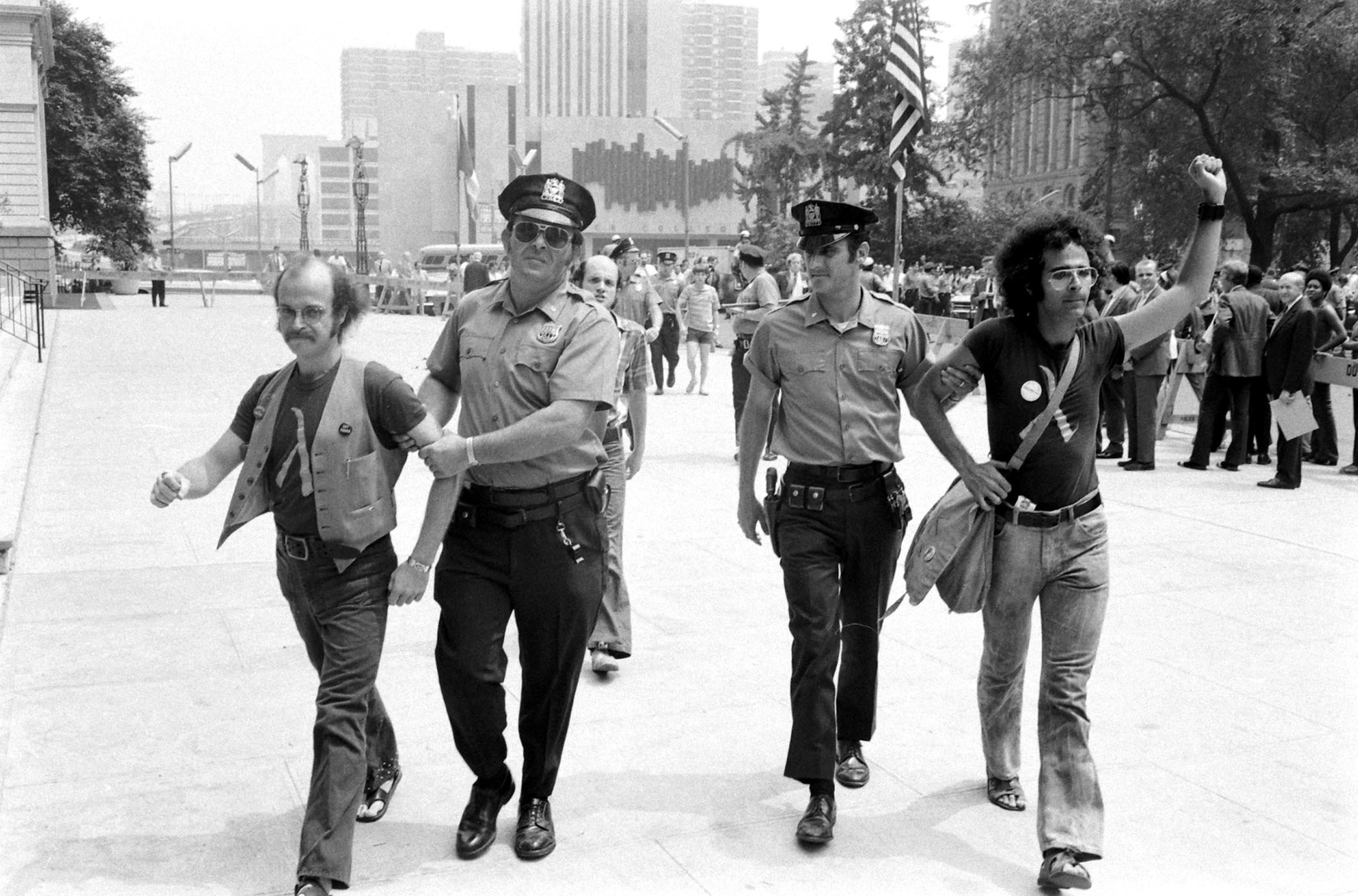
Grey Villet / Getty Images
Police officers escorting two protesters at a Gay Liberation Front demonstration in New York City, June 1971.
The events at New York City’s Stonewall Inn in 1969 were a watershed moment for LGBTQ activism and are often described as a “riot” — do you agree with this description?
It’s important to note that the people who participated in Stonewall at the time categorized this event as a riot. Because there was widespread unrest in the US and because there were very similar kinds of demonstrations against racial oppression occurring, the people who participated in Stonewall, I think, really wanted to align this moment with what was happening elsewhere.
It’s important to see that there is a very strong link between the African American civil rights movement and the LGBT civil rights movement. The LGBT civil rights movements have been incredibly inspired by the African American fight for civil rights, so in the same way when LGBT activists talked about Stonewall, they wanted to show that what happened at Stonewall was also a fight for equality.
It’s true that participants disagree about what to call this event. Some of them believe that there was violence, but that it wasn’t violent enough to qualify as being a riot, and some feel that there is a politics to calling these kinds of things riots — in the same way that many historians of African American history also feel like the racial uprisings and disturbances in the 1960s also shouldn’t be called riots, but rather protests, demonstrations, or rebellions. That said, the participants thought about this event in many different ways and there’s a politics to all of this language that I do not think is resolvable.
What lessons can be learned from these demonstrations?
The thing that strikes me the most from those demonstrations of the ’60s and ’70s is the duality of these events. These demonstrations were designed for both the media and for a show of political strength — these people were trying to make a point to elected officials. But on the other hand, what these protests do is draw people together as a community.
I remember myself as an activist with ACT UP in the late ’80s and ’90s, there were demonstrations we did that may not have gotten the same kind of media attention or made an impact on elected officials, but it drew us together as a community. So I think that both of those things are happening at the same time — building a political community and the message that you’re putting across.
These are the tactical lessons that can be learned if you look back over the history of LGBT activism — to really think about what is the messaging, the activity as a whole, and even the theatrical element to a demonstration and not to underestimate how important drawing together a political community can be.
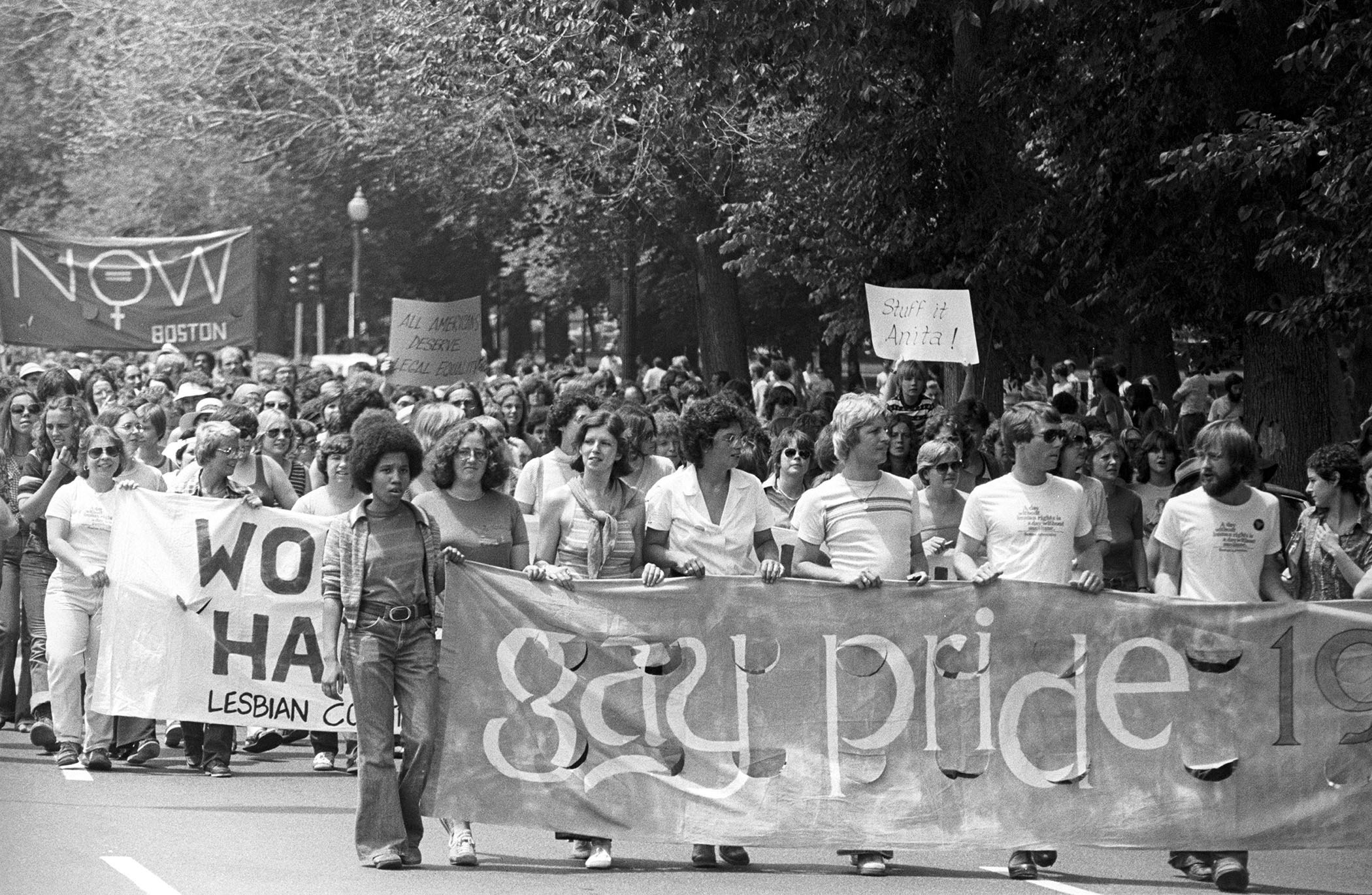
Spencer Grant / Getty Images
People participate in a gay and lesbian pride parade in the Back Bay neighborhood of Boston in 1975.
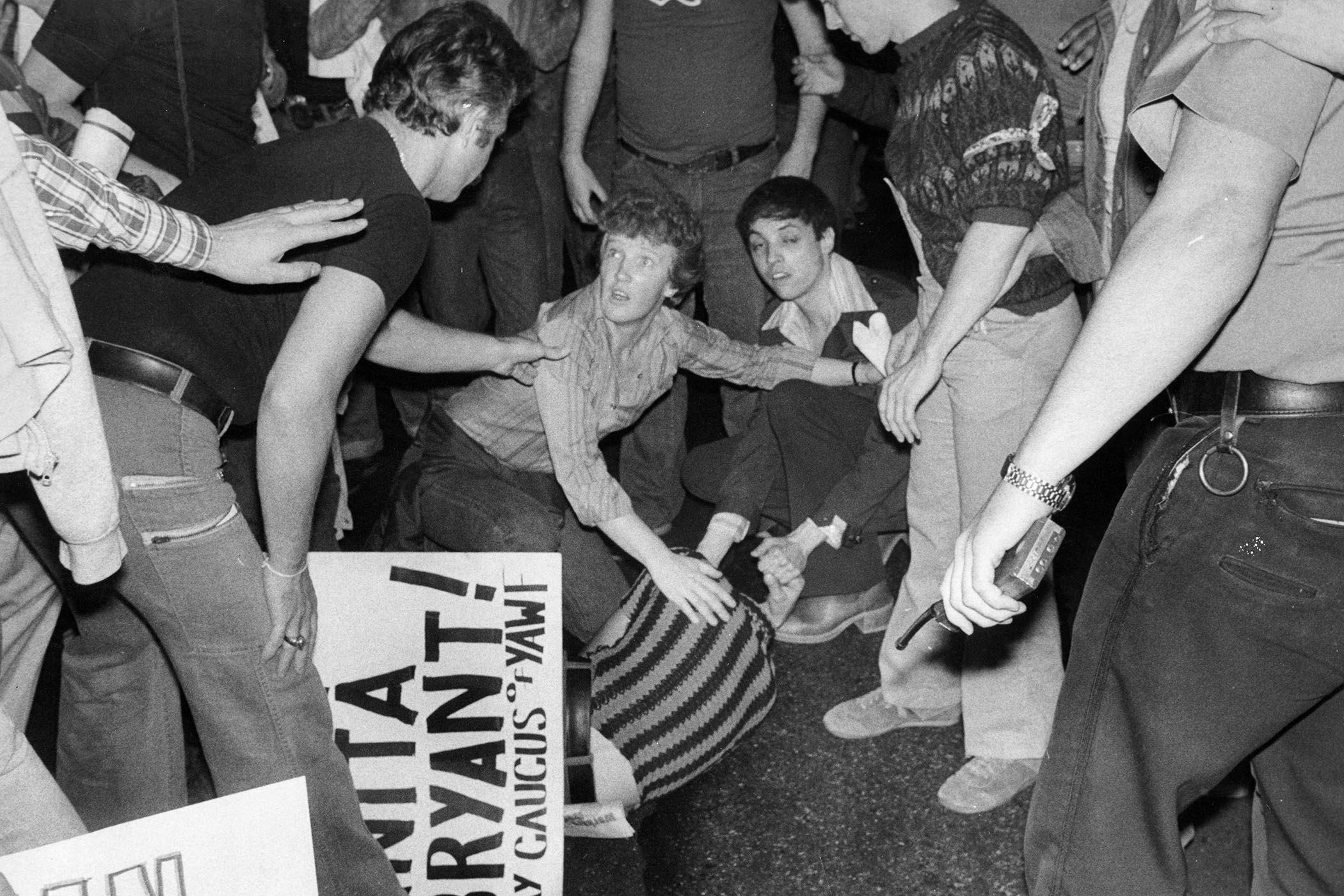
New York Post Archives / Getty Images
LGBTQ rights protesters huddle around a colleague knocked down in a scuffle during a march in New York City on June 8, 1977.
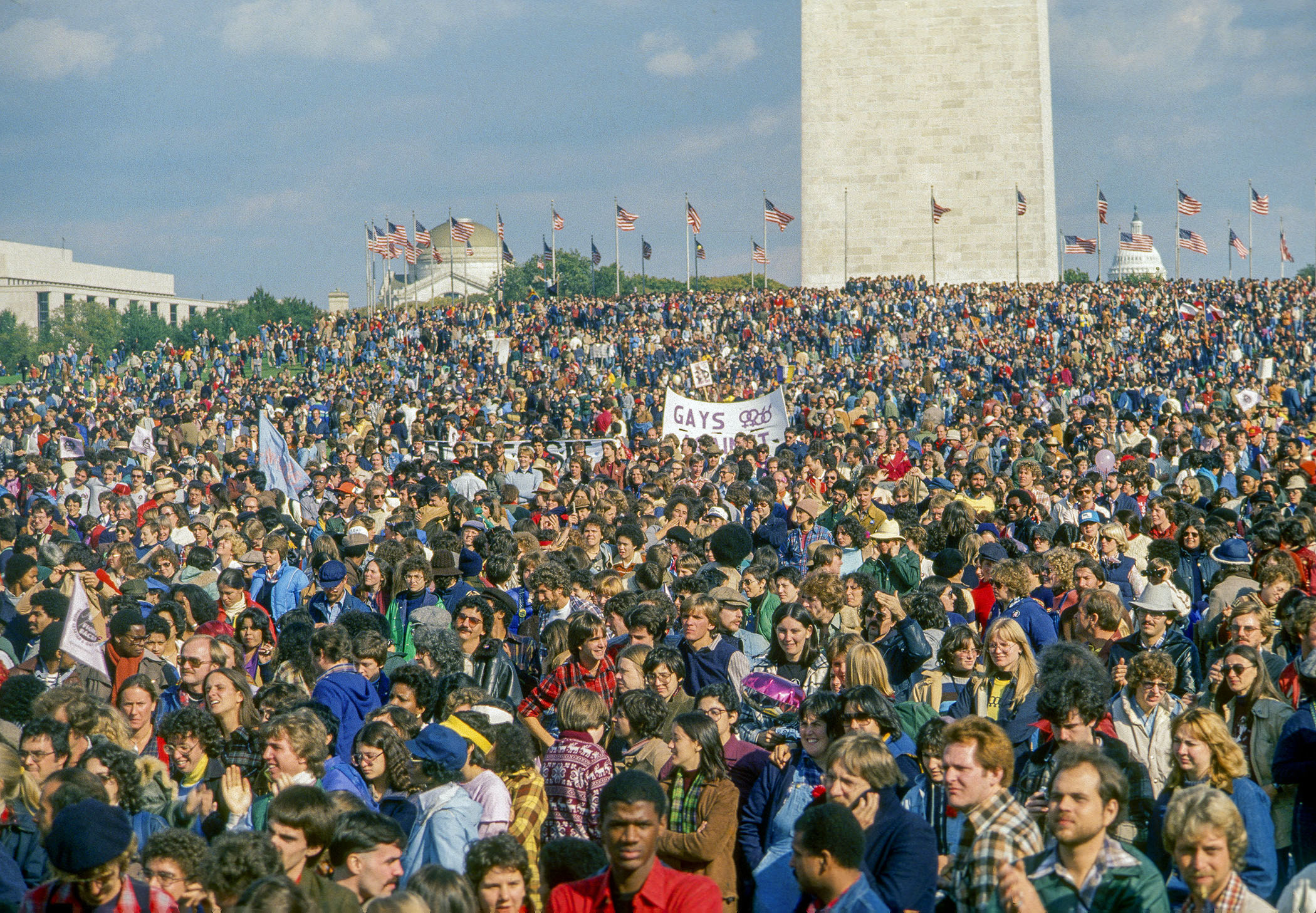
Mark Reinstein / Getty Images
Crowds gather during the first National March on Washington for Lesbian and Gay Rights in Washington DC, on Oct. 14, 1979.
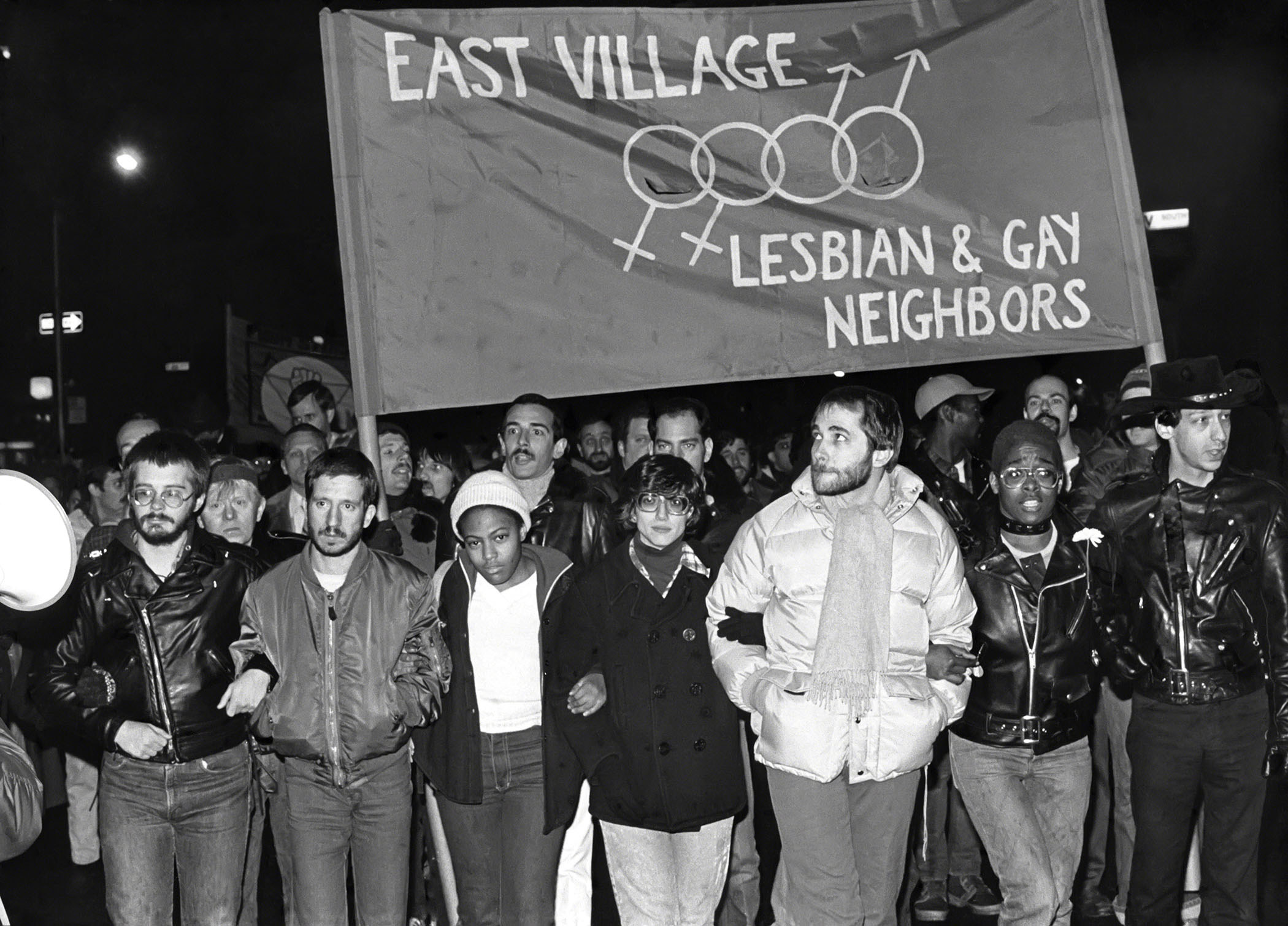
Images Press / Getty Images
An LGBTQ pride demonstration in New York City, circa 1980.

Barbara Alper / Getty Images
Marchers on an LGBTQ pride parade through New York City carry a banner reading "AIDS: We need research, not hysteria!" in June 1983.
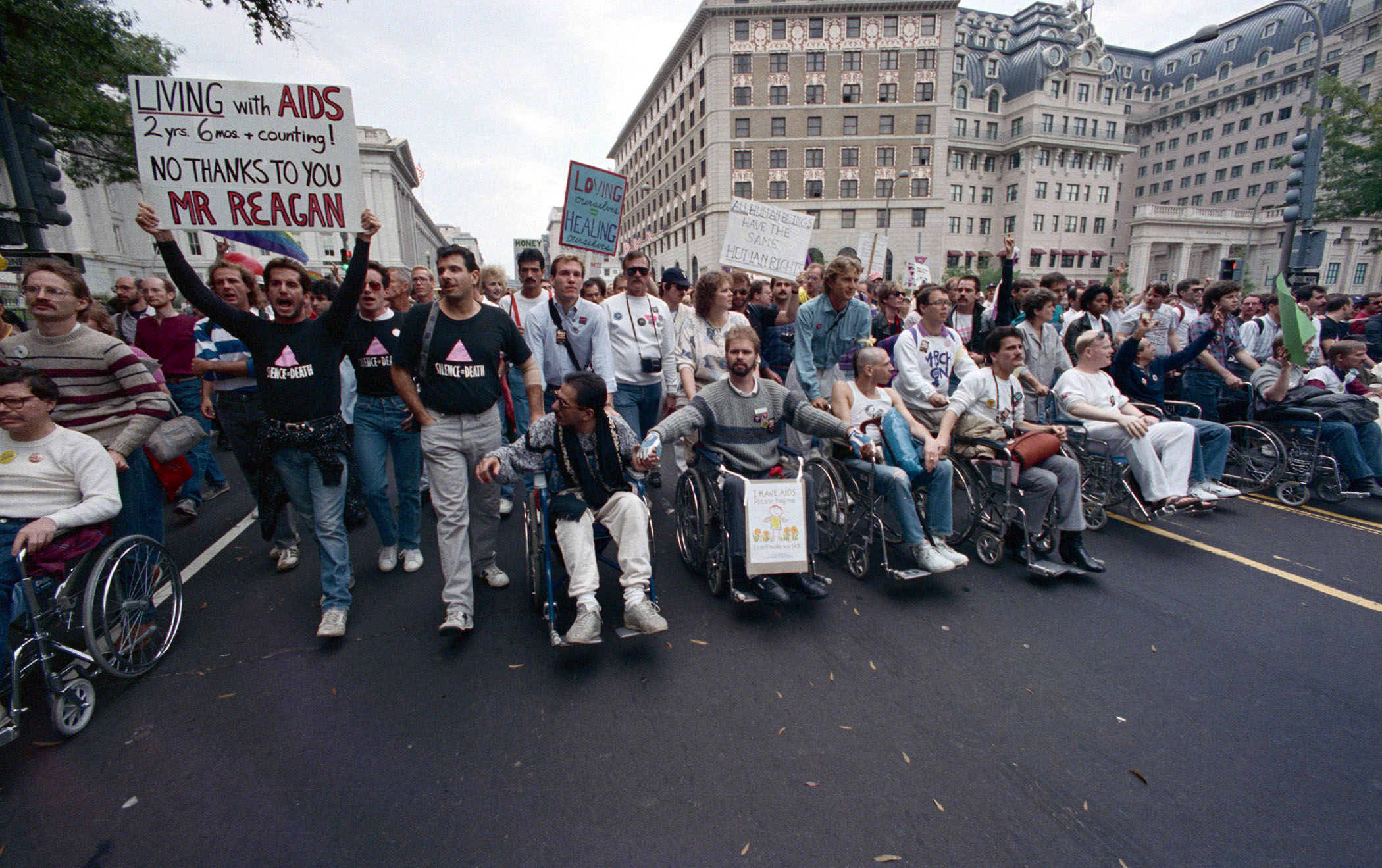
Bettmann / Bettmann Archive
AIDS victims and their supporters participate in the March on Washington for Lesbian and Gay rights in October 1987.
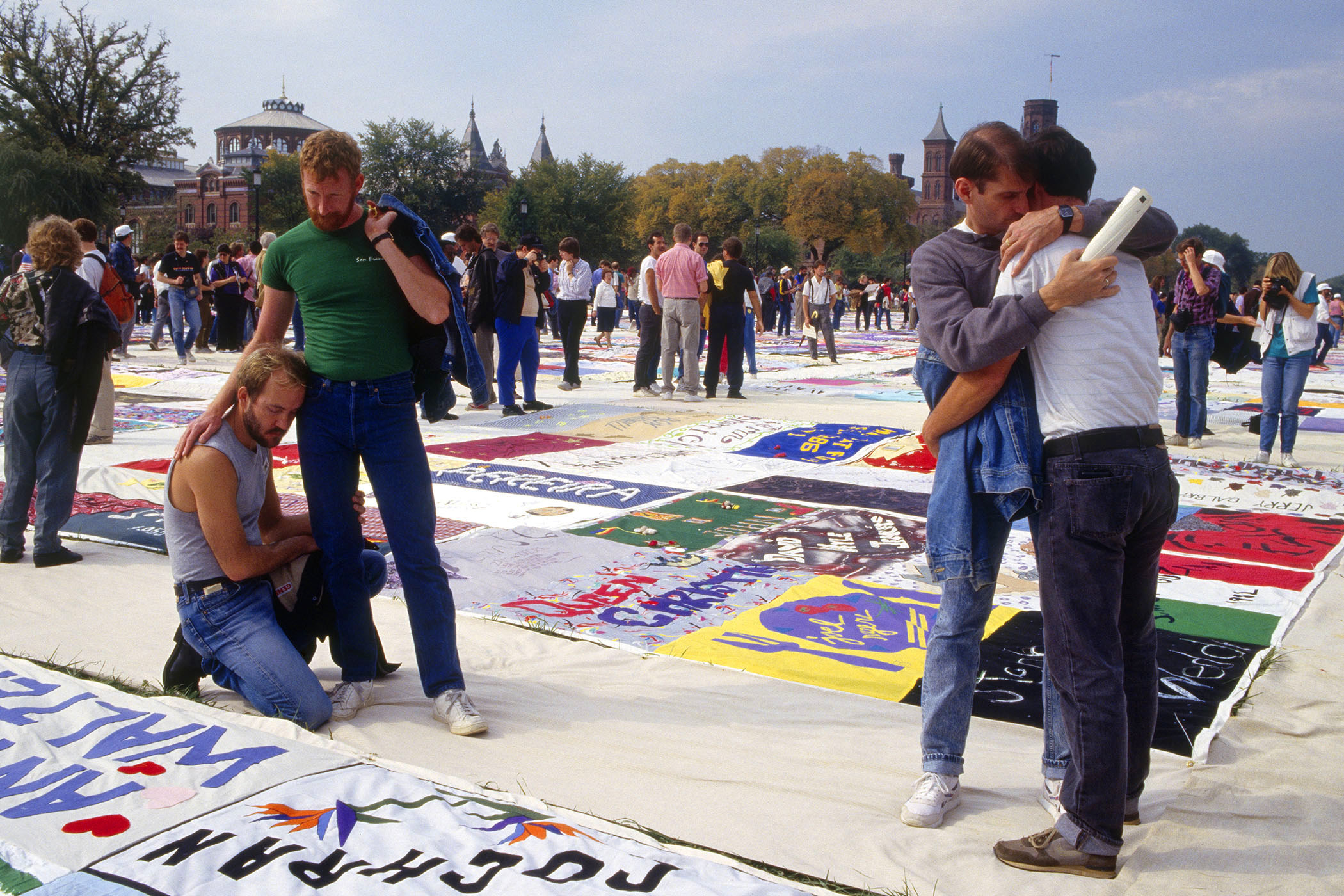
Jean-louis Atlan / Getty Images
Demonstrators gather to pay homage to AIDS victims, walking along a large patchwork quilt representing the dead in Washington, DC, on Oct. 11, 1987.
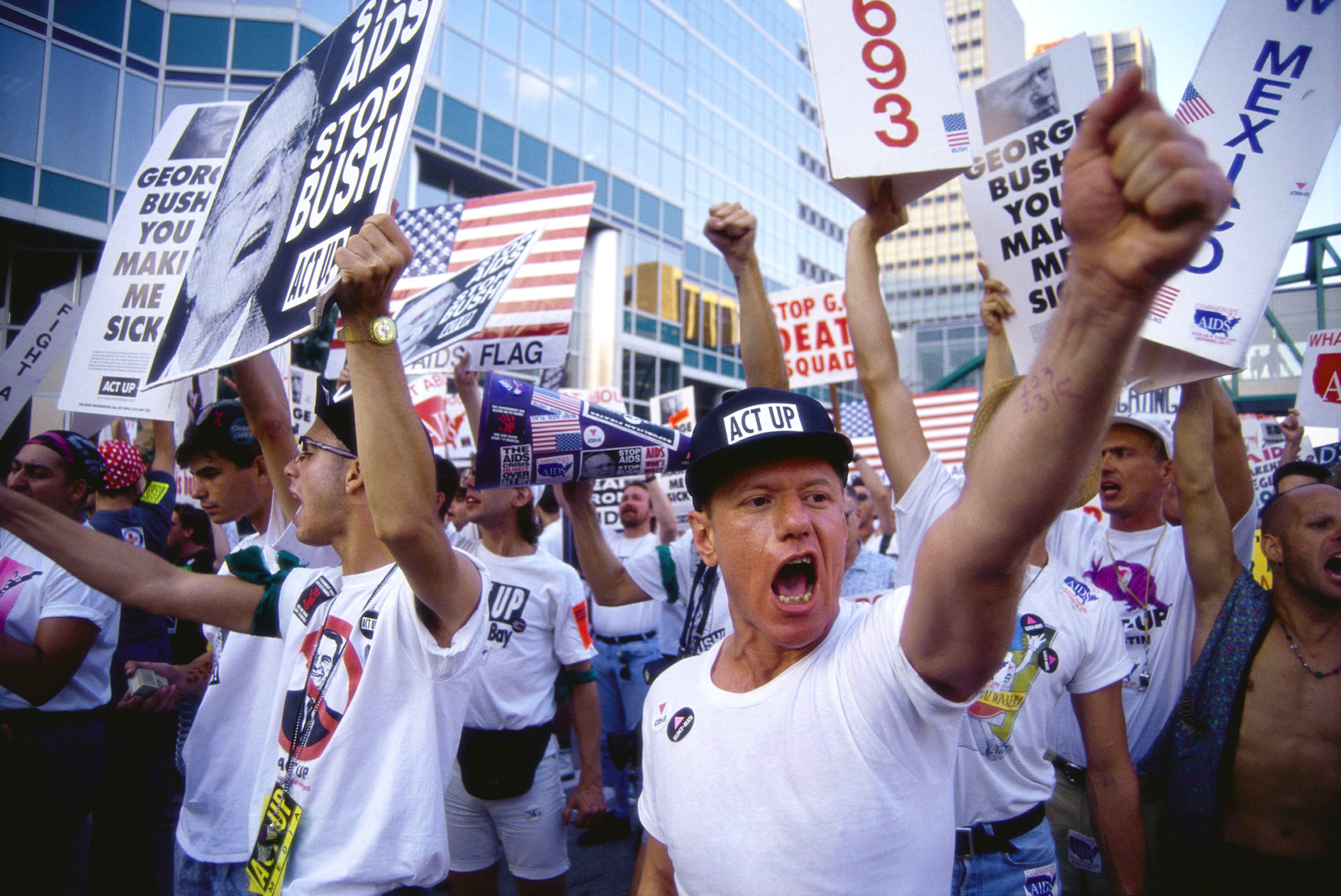
Gregory Smith / Getty Images
In a protest organized by ACT UP, demonstrators shout and carry posters outside the 1992 Republican National Convention in Houston.
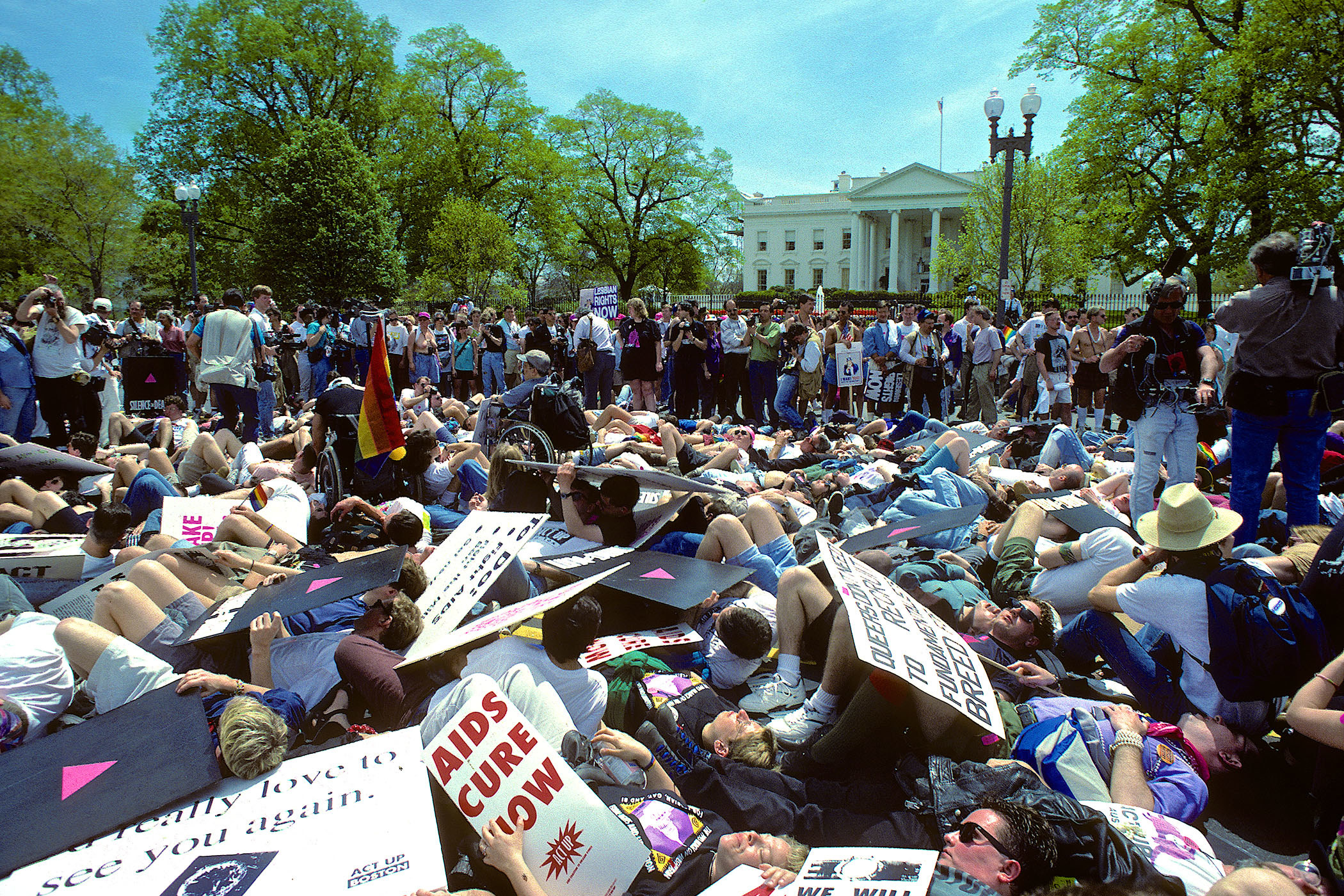
Mark Reinstein / Getty Images
ACT UP stages a demonstration with more than 1,000 activists from across the country at the White House in Washington, DC, on April 25, 1993. The demonstration accused the pharmaceutical industry of adhering to profit-driven research, price gouging, corporate secrecy, and inaction while allowing people with AIDS to die.
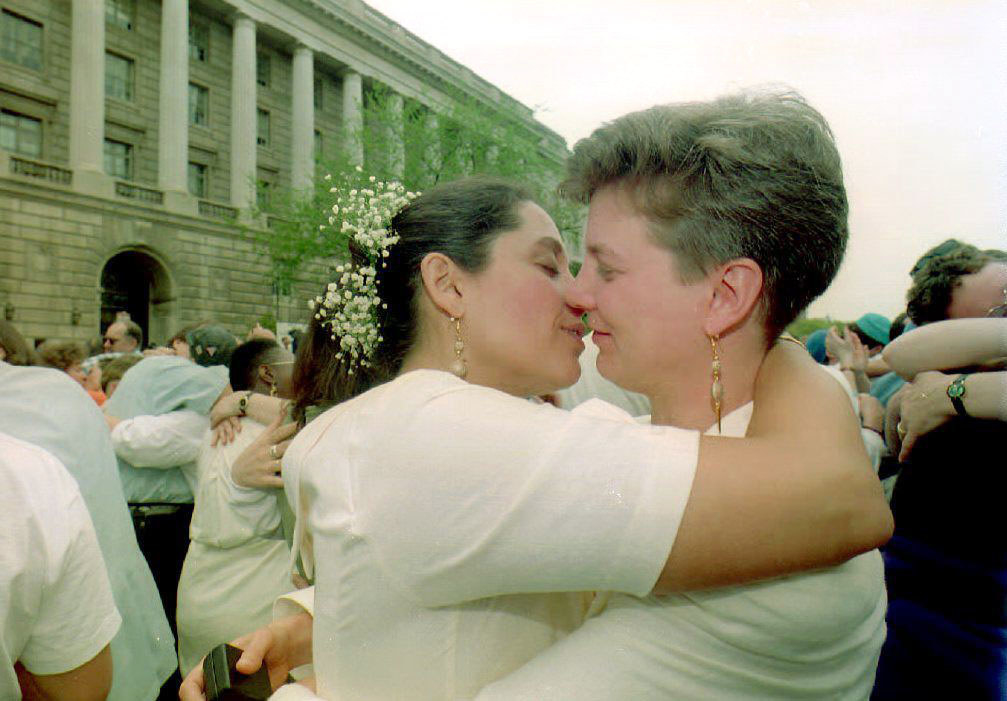
Jennifer K. Law / Getty Images
Wendy Benner-Leon (right) and Terri Leon-Benner, from Boston, embrace after exchanging wedding vows at an Interfaith Ceremony of Commitment in front of the Internal Revenue Service Building in Washington, DC, on April 24, 1993. The wedding ceremony was a demonstration for same-sex couples' rights under US tax law.
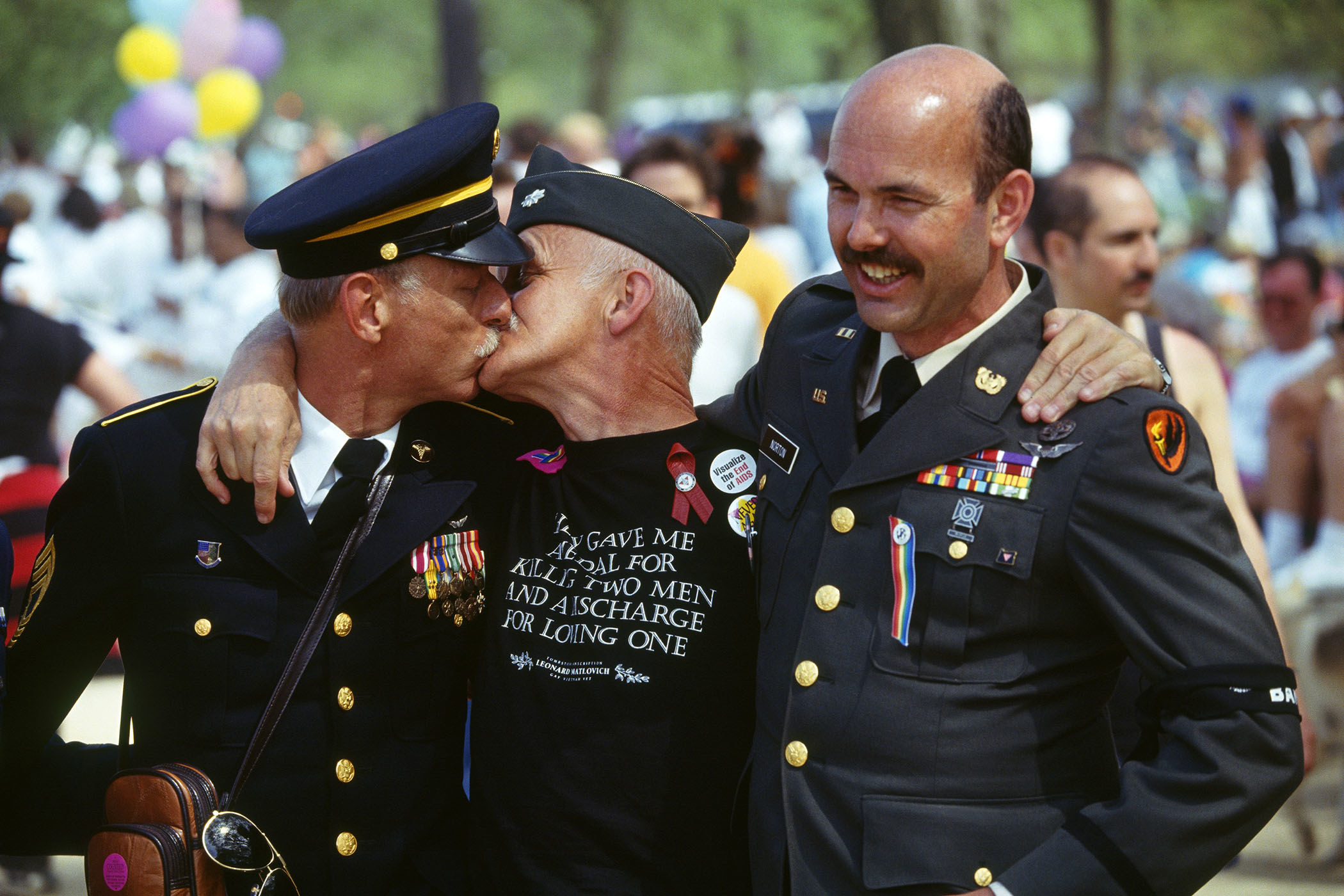
Brooks Kraft / Getty Images
Veterans protest the US military's "Don't Ask, Don't Tell" policy in Washington, DC, on April 24, 1993.
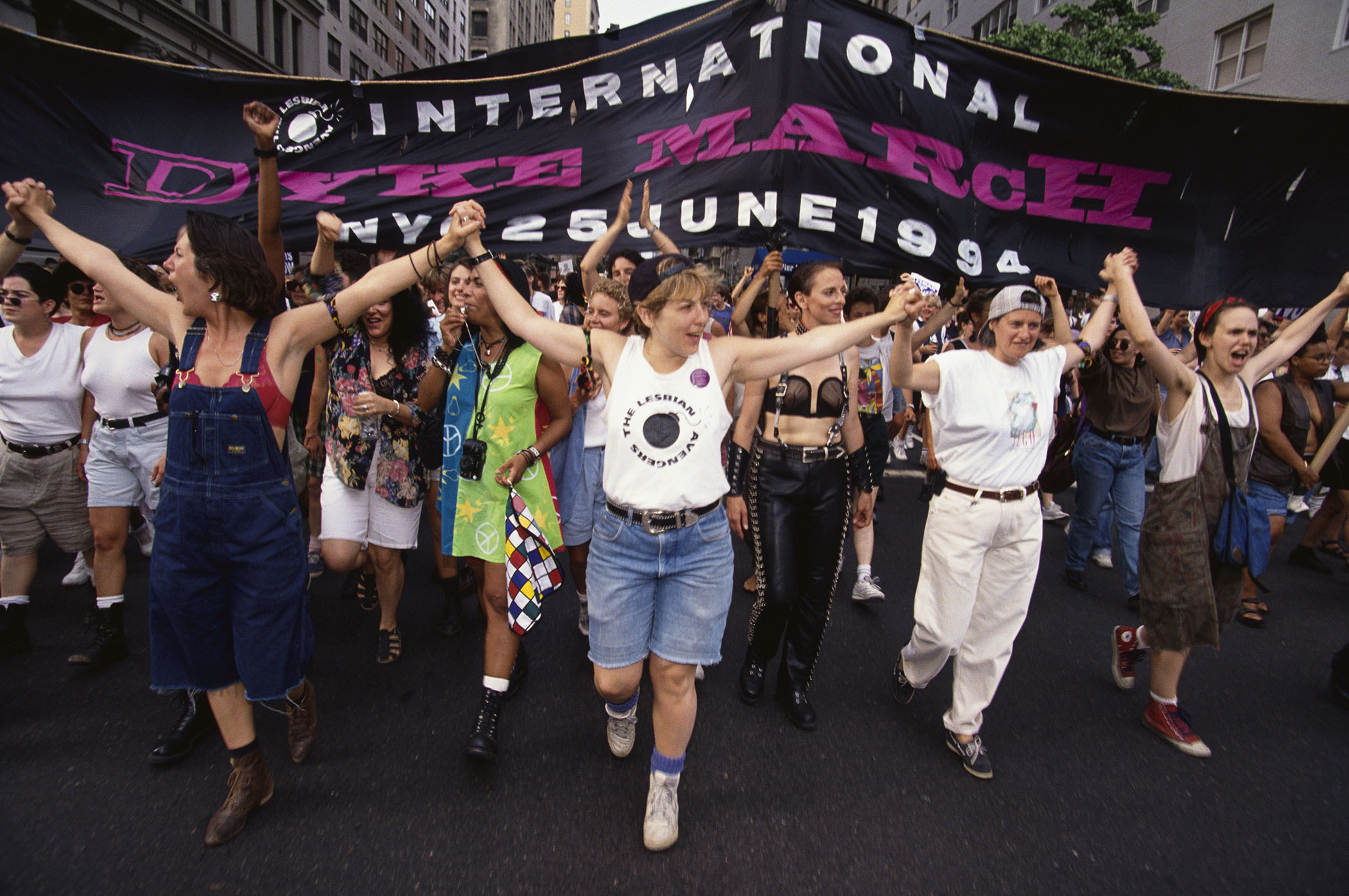
Viviane Moos / Getty Images
Women march in front of an "International Dyke March" banner in New York City on June 25, 1994.
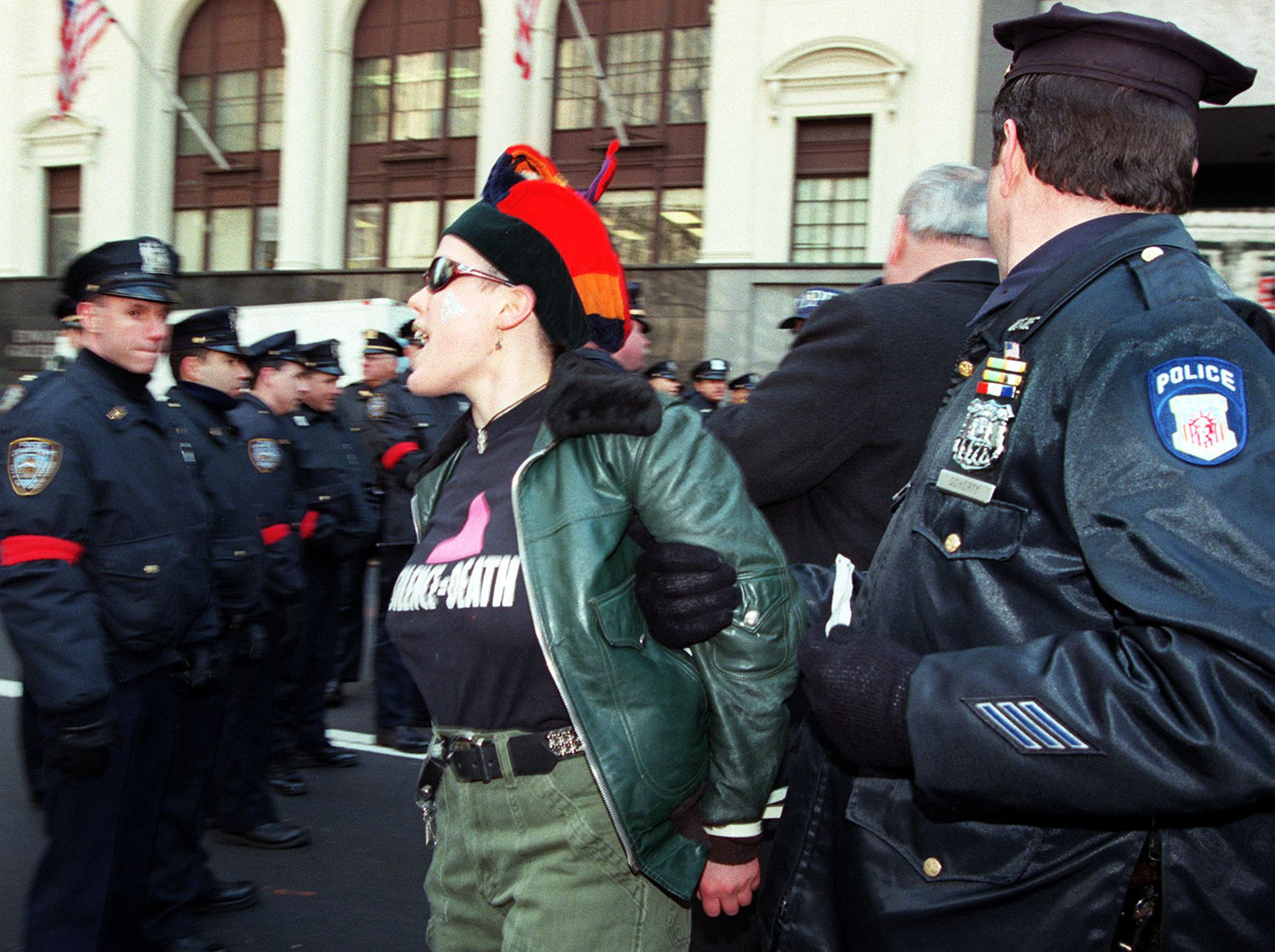
Jon Levy / Getty Images
A protester with the Irish Lesbian and Gay Organization is arrested in New York City before the start of the 237th annual St Patrick's Day parade on March 17, 1998. This was the eighth consecutive year that ILGO had been excluded from marching in the St Patrick's Day parade.
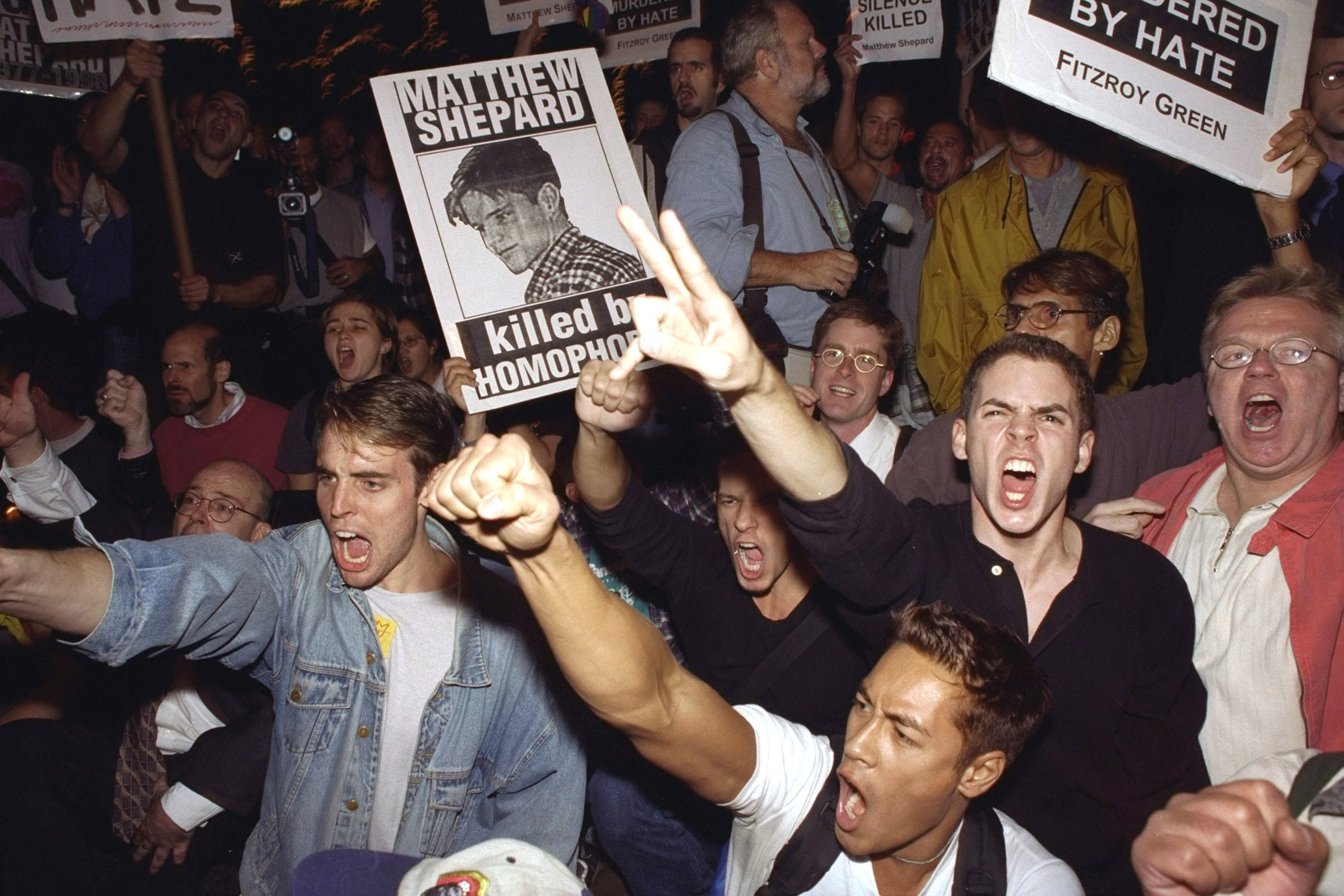
New York Daily News Archive / Getty Images
Demonstrators protest the hate killing of gay student Matthew Shepard on Oct. 19, 1998.
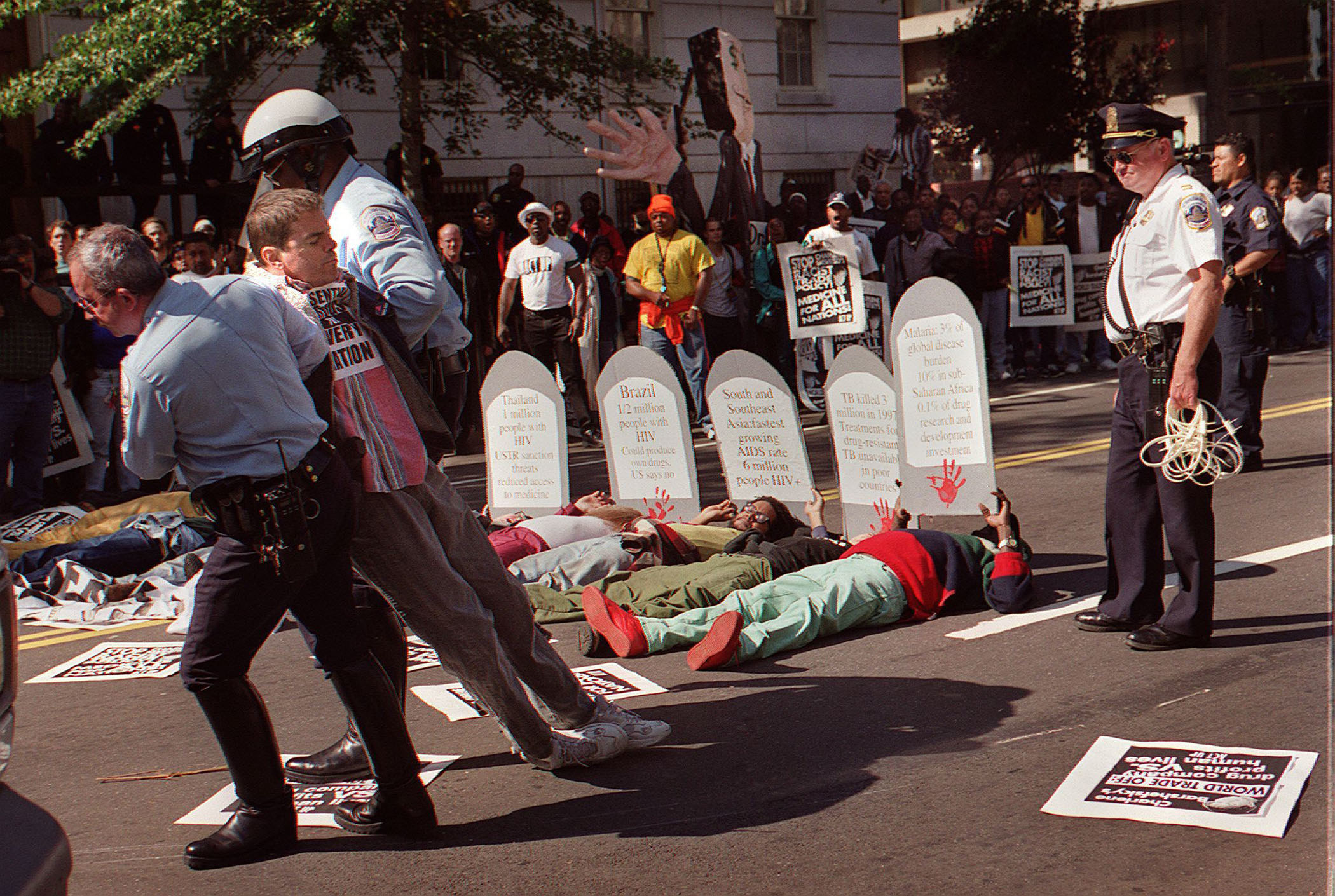
Joyce Naltchayan / Getty Images
Police officers in Washington, DC, arrest an ACT UP protester on Oct. 6, 1999, during a demonstration in front of the Office of the US Trade Representative.
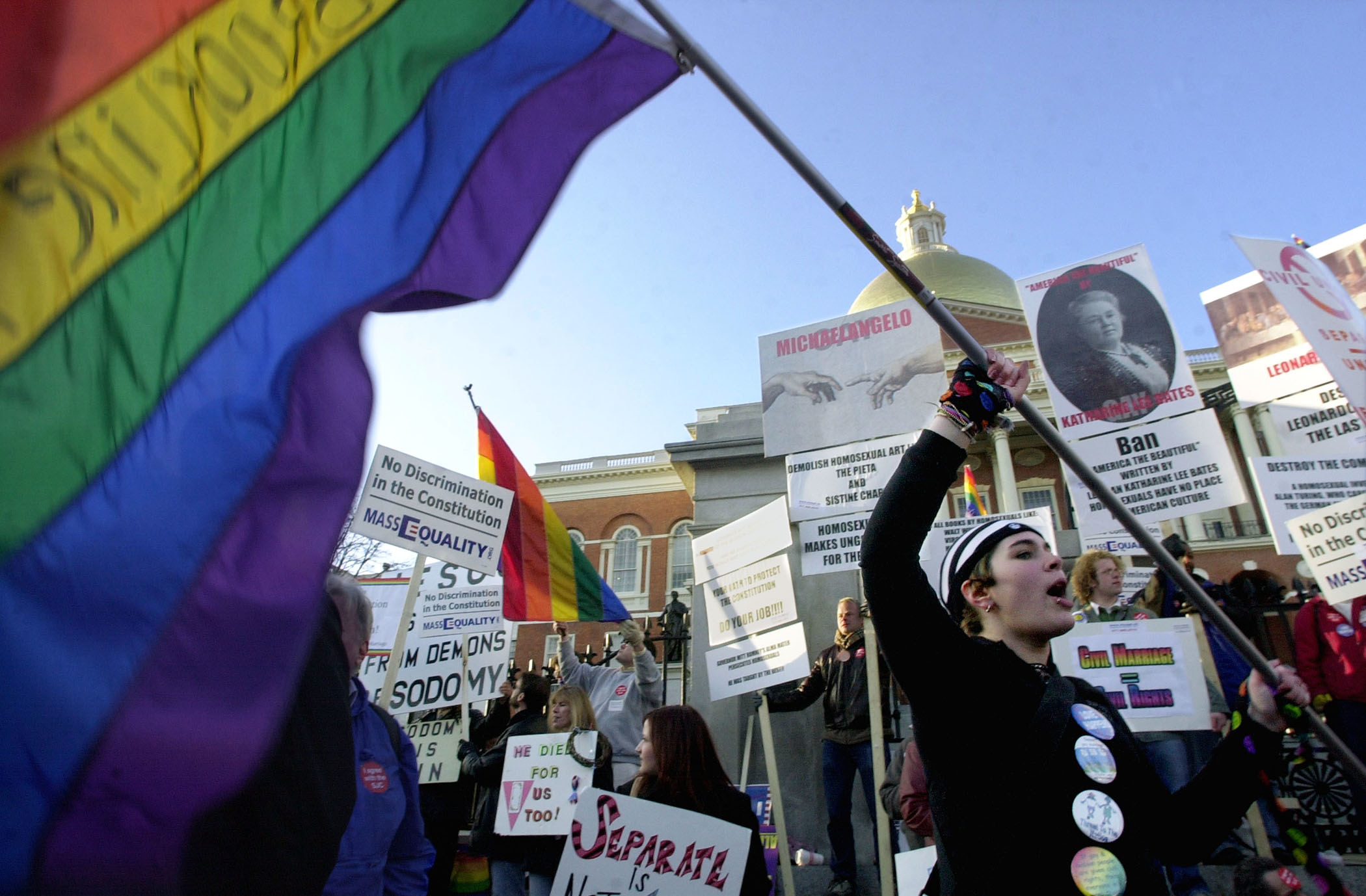
Michael Springer / Getty Images
A protester in favor of same-sex marriage rights waves a rainbow flag outside the Massachusetts State House in Boston on March 29, 2004.
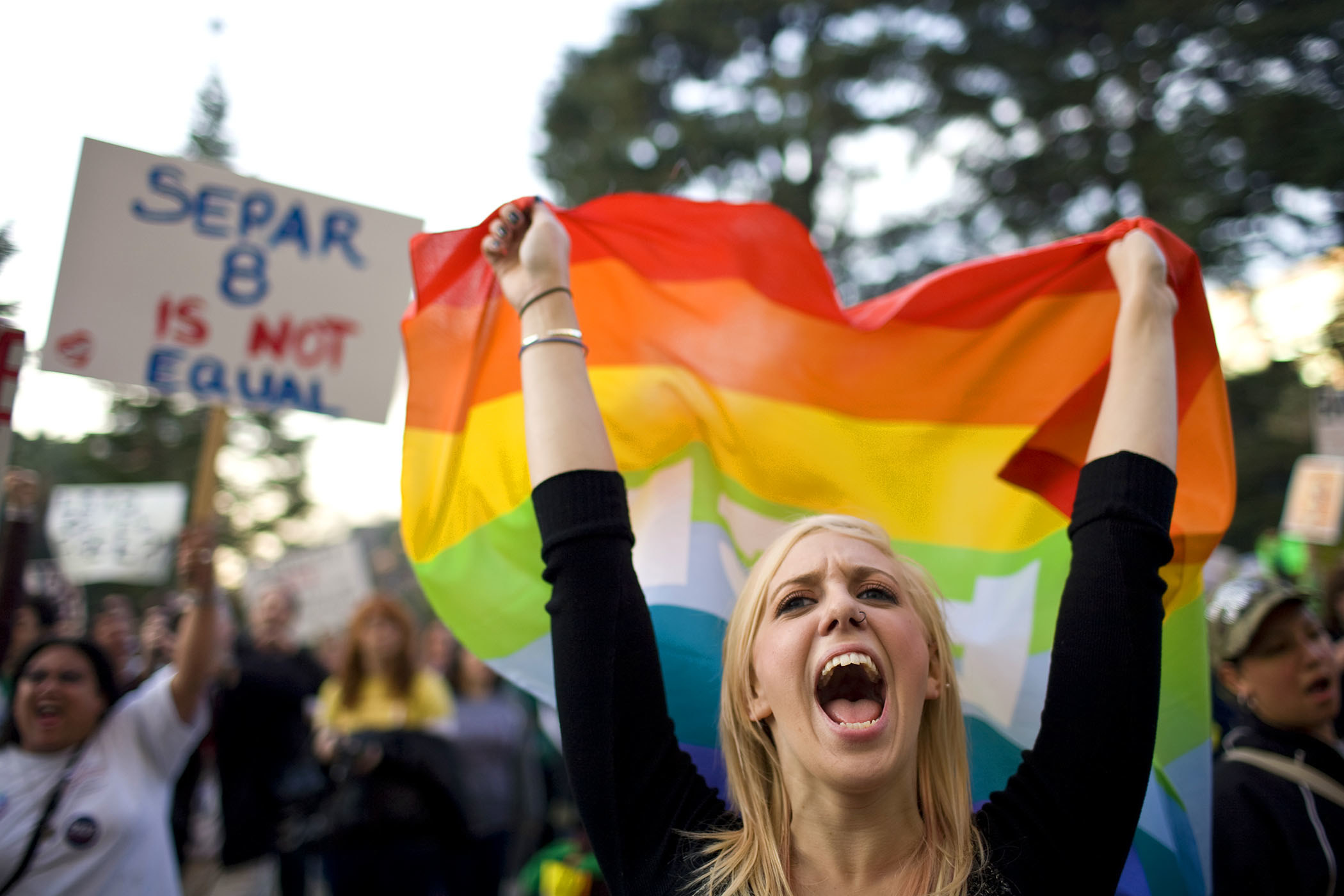
Max Whittaker / Getty Images
A woman demonstrates in support of same-sex marriage on the steps of the California State Capitol in Sacramento on Nov. 22, 2008.
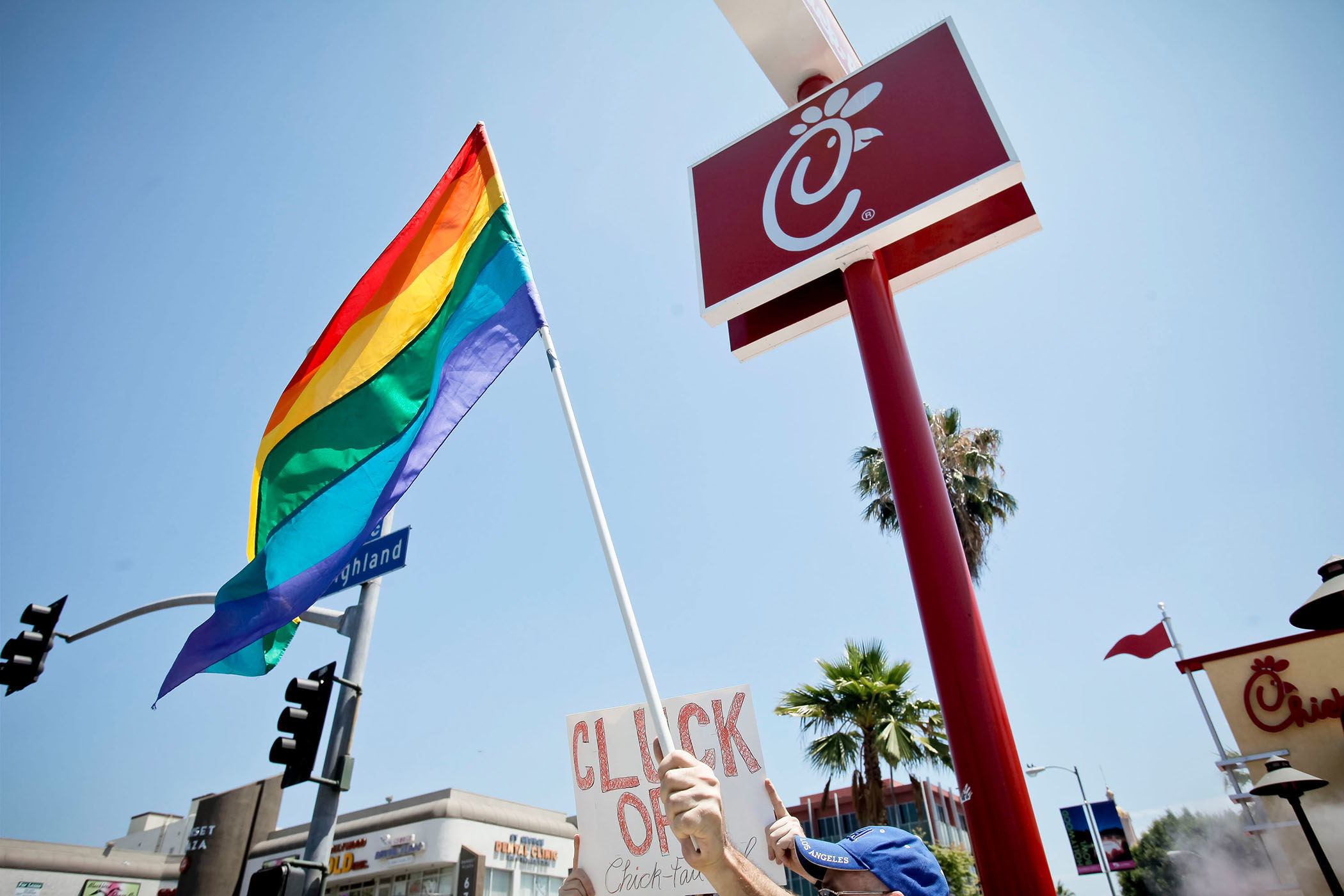
Tibrina Hobson / FilmMagic
People join a protest against Chick-fil-A over their anti-gay beliefs on Aug. 1, 2012.
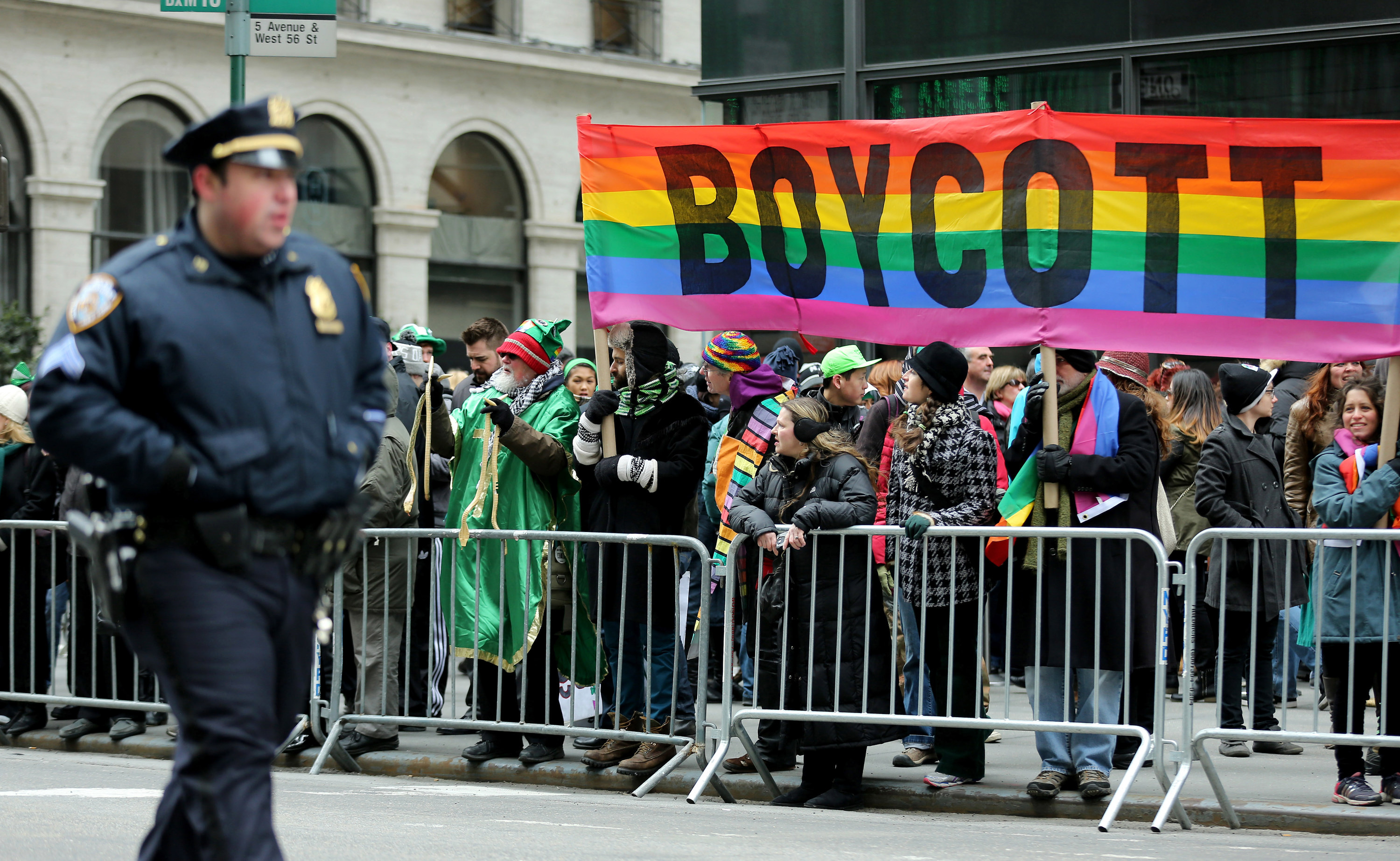
Anadolu Agency / Getty Images
People protest against the exclusion the LGBTQ community from the St. Patrick's Day Parade in New York City on March 17, 2014.
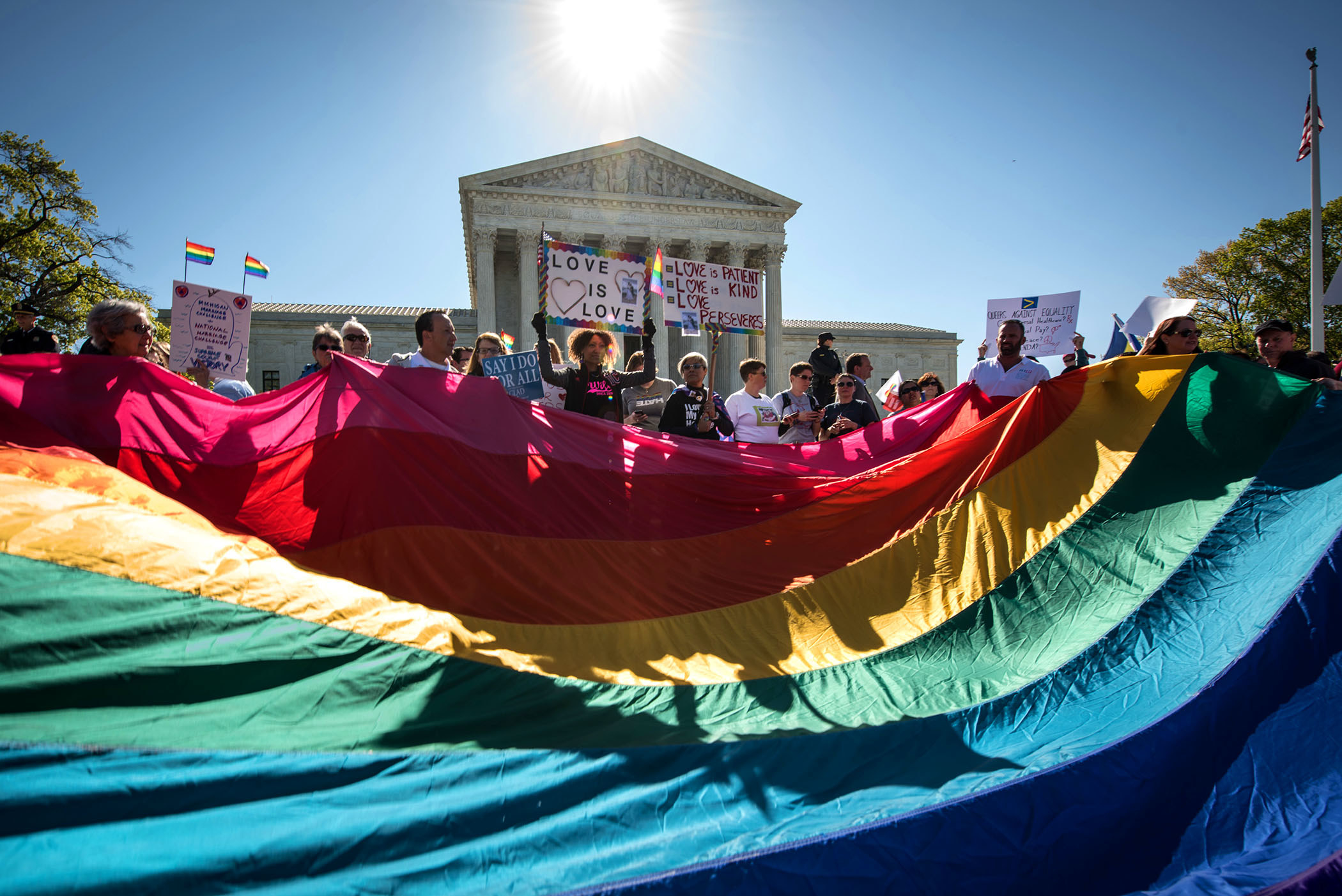
Ken Cedeno / Getty Images
Same-sex marriage demonstrators rally outside the Supreme Court before oral arguments on the issue in Washington, DC, on April 28, 2015.
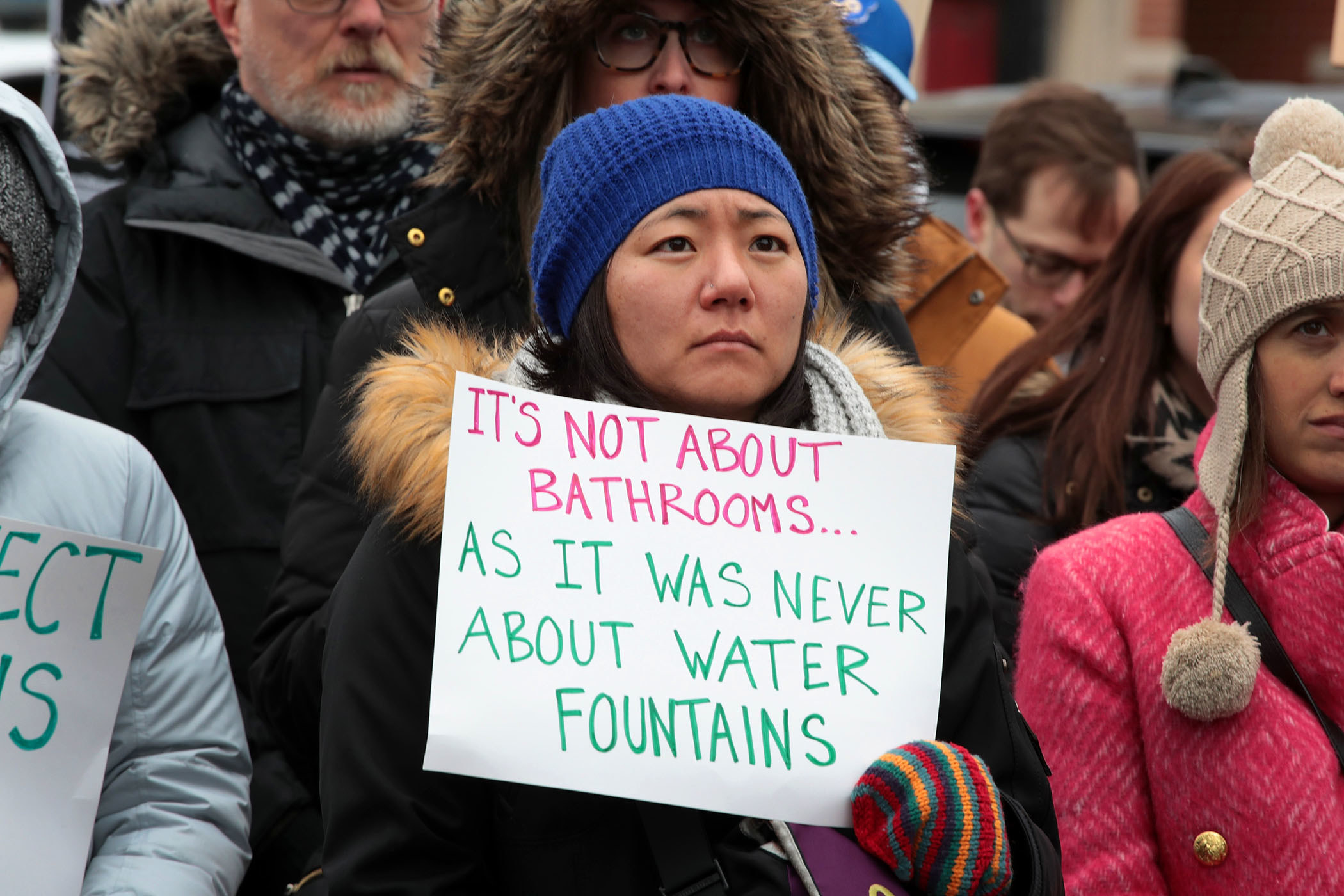
Scott Olson / Getty Images
Demonstrators advocate for transgender rights in Chicago on Feb. 25, 2017, to protest President Donald Trump's decision to reverse the Obama-era policy requiring public schools to allow transgender students to use the bathroom that corresponds with their gender identity.
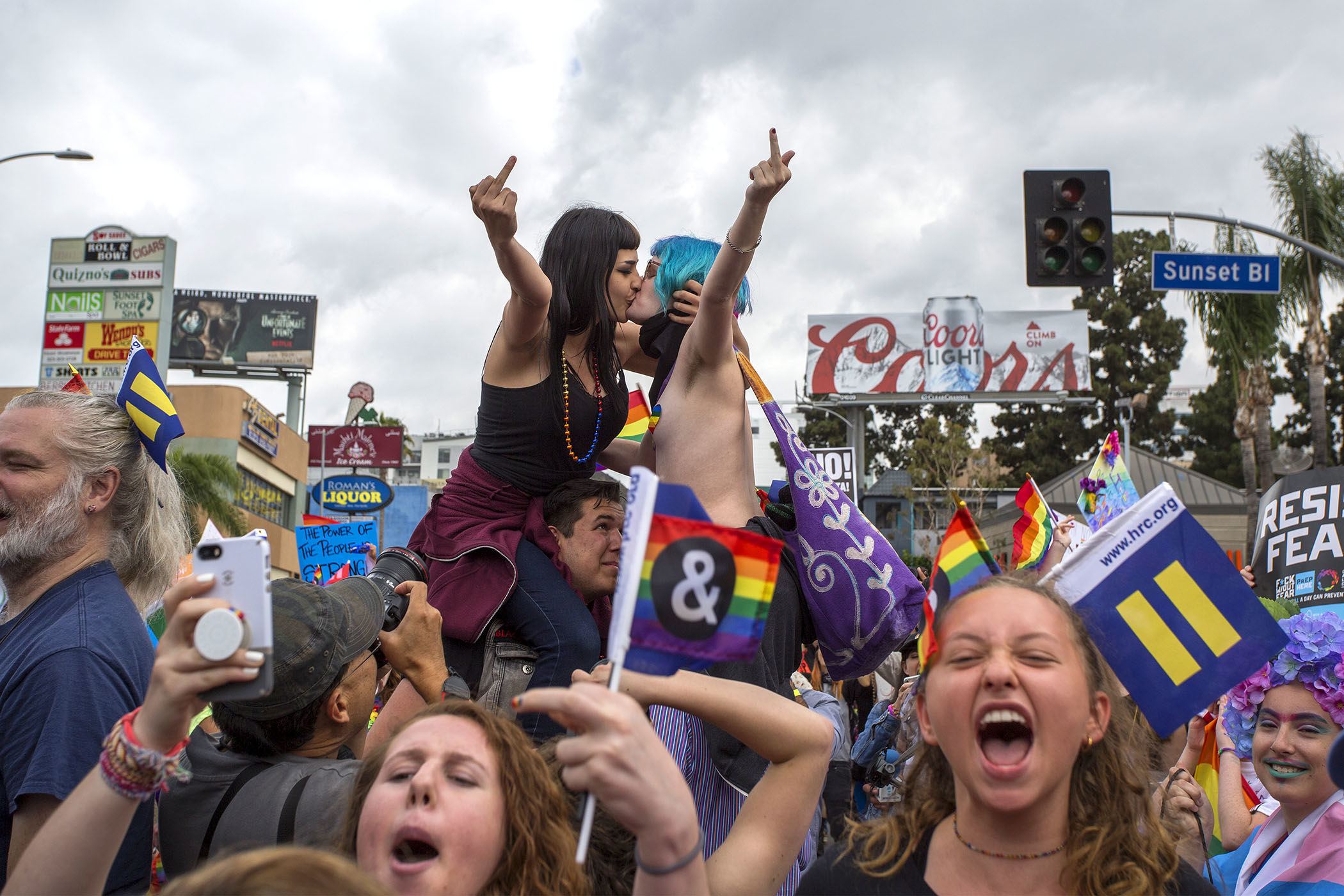
David Mcnew / Getty Images
Women kiss in defiance of hateful speech from provocative street preachers at the #ResistMarch during the 47th annual LA Pride Festival on June 11, 2017.
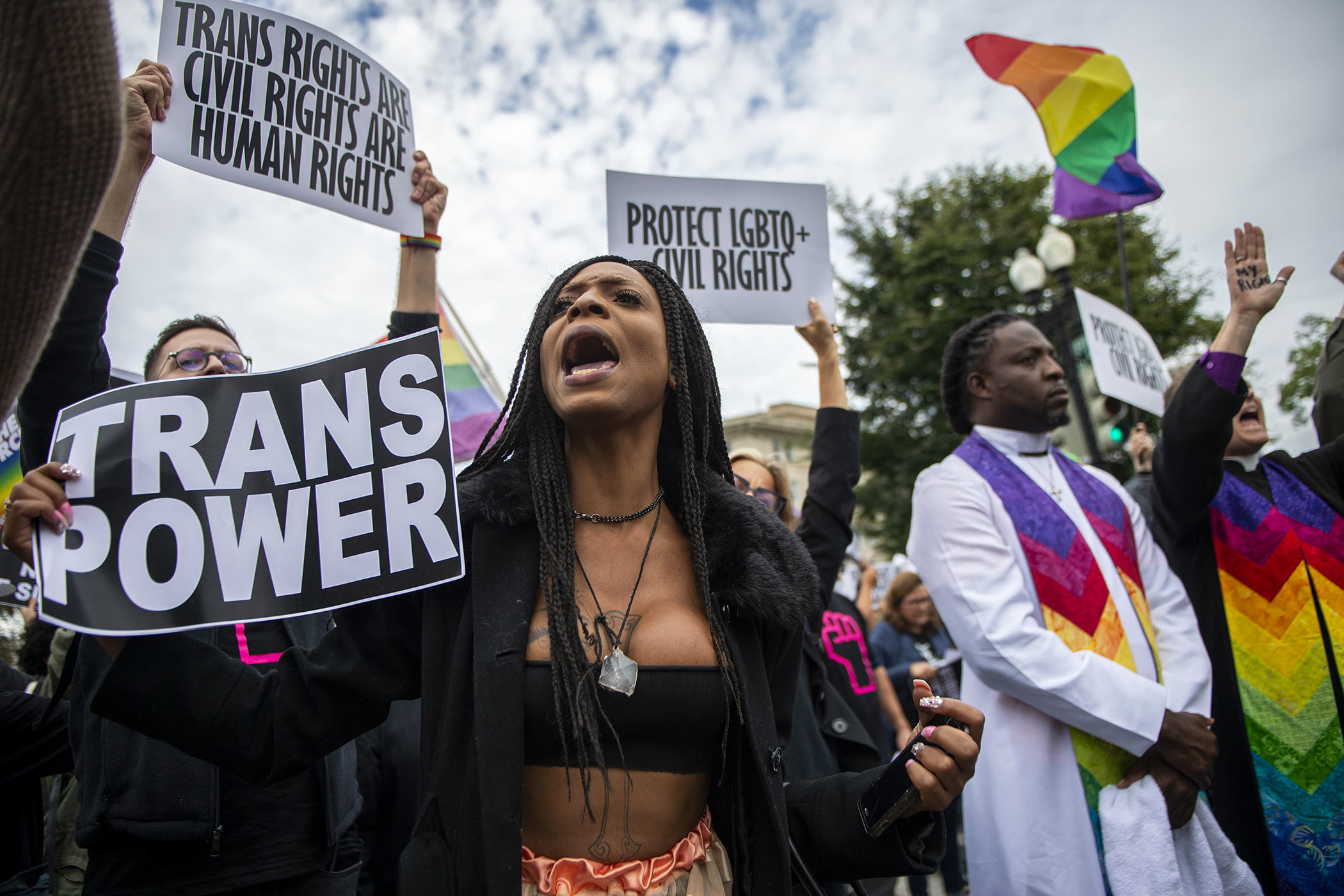
Caroline Brehman / Getty Images
Protesters block the street in front of the Supreme Court in Washington, DC, as it hears arguments on whether LGBTQ people are covered by a federal law barring employment discrimination on the basis of sex on Oct. 8, 2019.
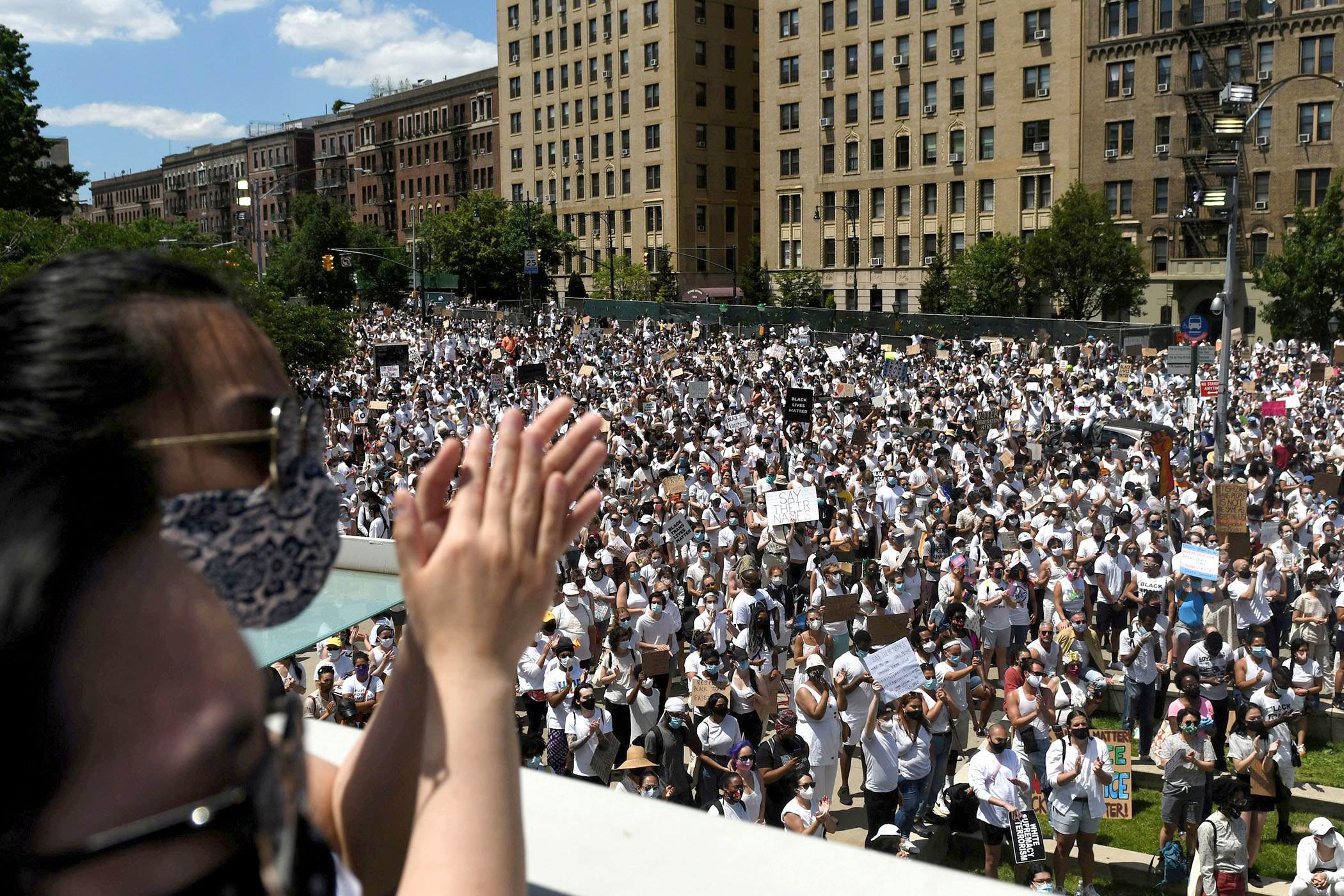
Stephanie Keith / Reuters
People participate in a Black Trans Lives Matter rally in the Brooklyn borough of New York City on June 14, 2020.